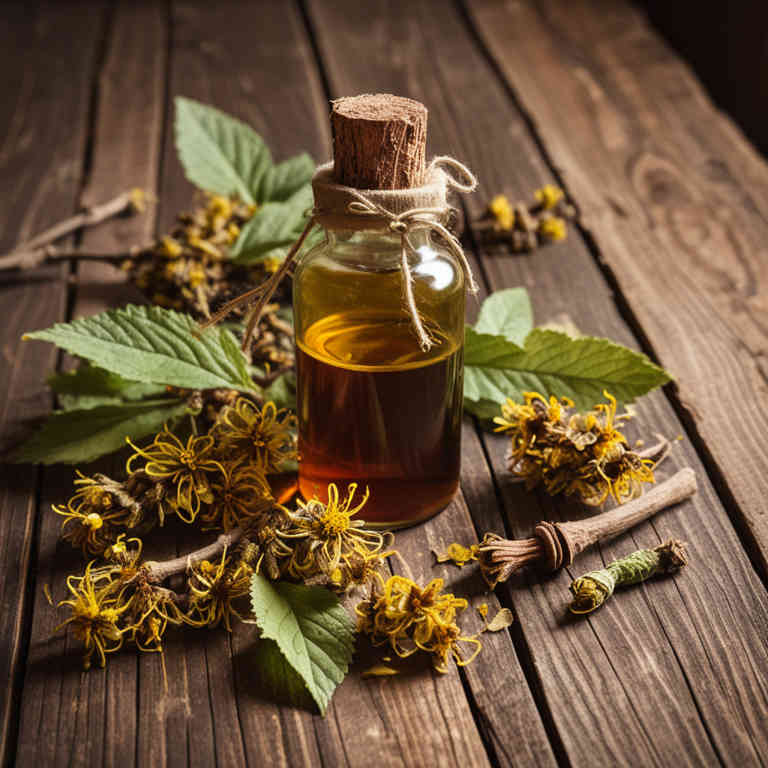Hamamelis virginiana tincture for medicinal use

Hamamelis virginiana tincture is a preparation made from the bark and leaves of the witch hazel plant, which is native to North America.
It is commonly used in herbalism for its astringent, anti-inflammatory, and soothing properties. The tincture is often applied topically to treat skin irritations, wounds, and hemorrhoids due to its ability to reduce swelling and promote healing. It may also be used internally in small doses to support digestive health and manage mild bleeding.
In traditional herbal medicine, it is valued for its versatility and gentle yet effective action on both the skin and internal systems.
Uses
Hamamelis virginiana tincture has been used to treat various skin conditions and inflammatory disorders for centuries.
Historically, Native American tribes utilized the bark of the witch hazel plant for its astringent and soothing properties, applying it to wounds, insect bites, and skin irritations. In traditional herbal medicine, it was also used to relieve symptoms of hemorrhoids and as a remedy for digestive issues. Modern applications include its use in skincare products for its anti-inflammatory and antioxidant effects, as well as in herbal remedies for minor burns and eczema.
Today, it remains a popular natural treatment due to its versatility and perceived safety.
Benefits
Hamamelis virginiana tincture has health benefits such as reducing inflammation, soothing skin irritations, and promoting wound healing.
It is commonly used to treat conditions like hemorrhoids, eczema, and psoriasis due to its astringent and anti-inflammatory properties. The tincture contains compounds like tannins and flavonoids that help strengthen blood vessels and reduce swelling. It may also support digestive health by alleviating symptoms of irritable bowel syndrome.
However, it should be used with caution and under the guidance of a healthcare professional to avoid potential side effects.
Constituents
Hamamelis virginiana tincture active constituents include hydrastine, gallic acid, tannins, and flavonoids.
These compounds contribute to the tincture's astringent and anti-inflammatory properties. Hydrastine is known for its antimicrobial effects, while gallic acid provides antioxidant support. Tannins help in reducing inflammation and promoting wound healing.
Flavonoids enhance the overall therapeutic value by supporting skin health and reducing irritation.
Preparation
To make Hamamelis virginiana tincture, begin by harvesting the dried flowers or leaves of the witch hazel plant during its blooming season.
Next, place the dried plant material into a clean glass jar and cover it completely with a high-proof alcohol such as vodka or grain alcohol. Let the mixture sit in a dark, cool place for 4 to 6 weeks, shaking the jar occasionally to ensure even extraction. After the steeping period, strain the liquid through a fine mesh strainer or cheesecloth to remove the plant matter.
Finally, transfer the tincture to a dark glass bottle and store it in a cool, dry place, where it will remain potent for up to two years.
Side Effects
Hamamelis virginiana tincture may lead to gastrointestinal upset, including nausea, vomiting, and diarrhea, especially with high doses.
It can also cause skin irritation or allergic reactions in some individuals. Prolonged use may lead to liver damage, as with many herbal preparations. It is contraindicated for pregnant or breastfeeding women due to potential harm to the fetus or infant.
Always consult a healthcare provider before using this tincture, especially if you have pre-existing medical conditions or are taking other medications.